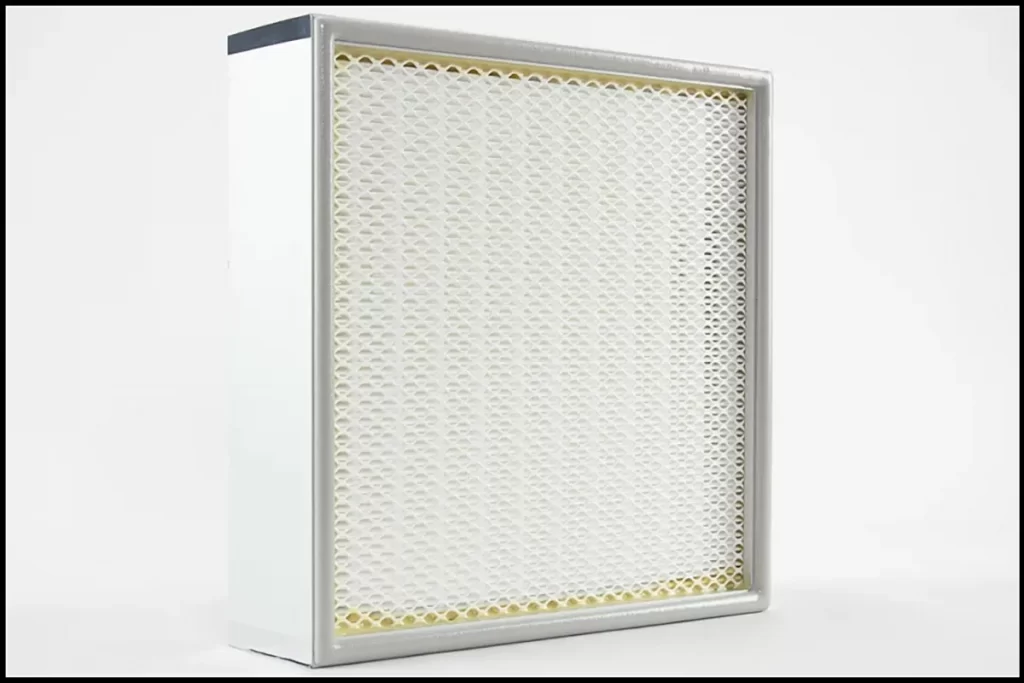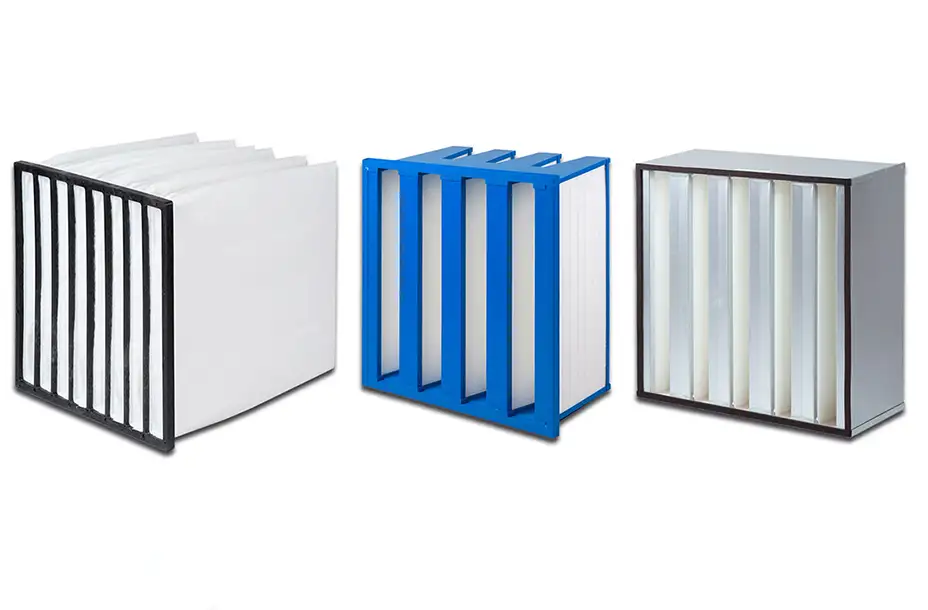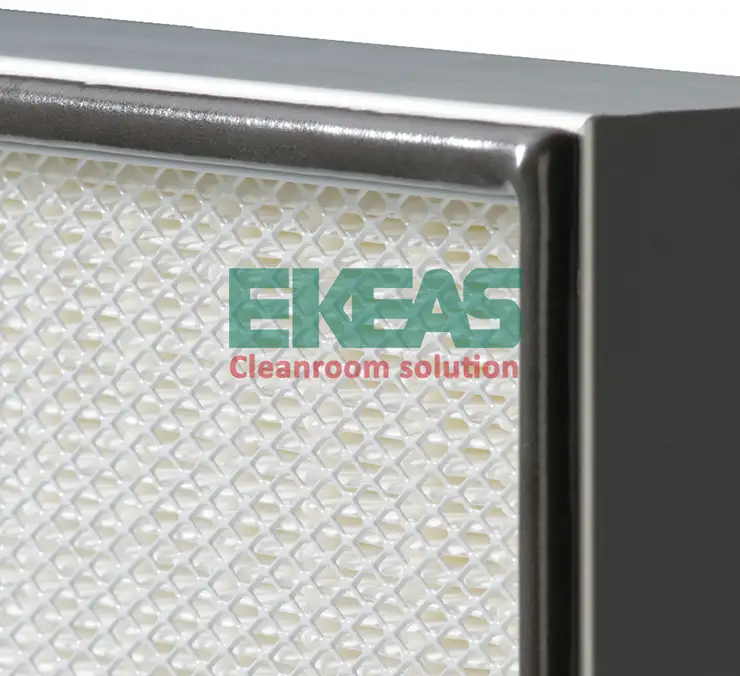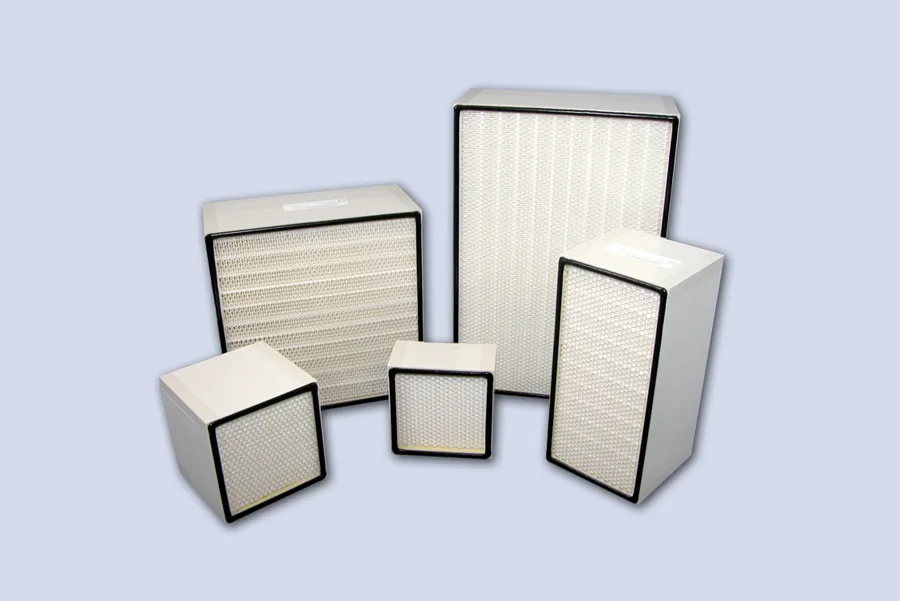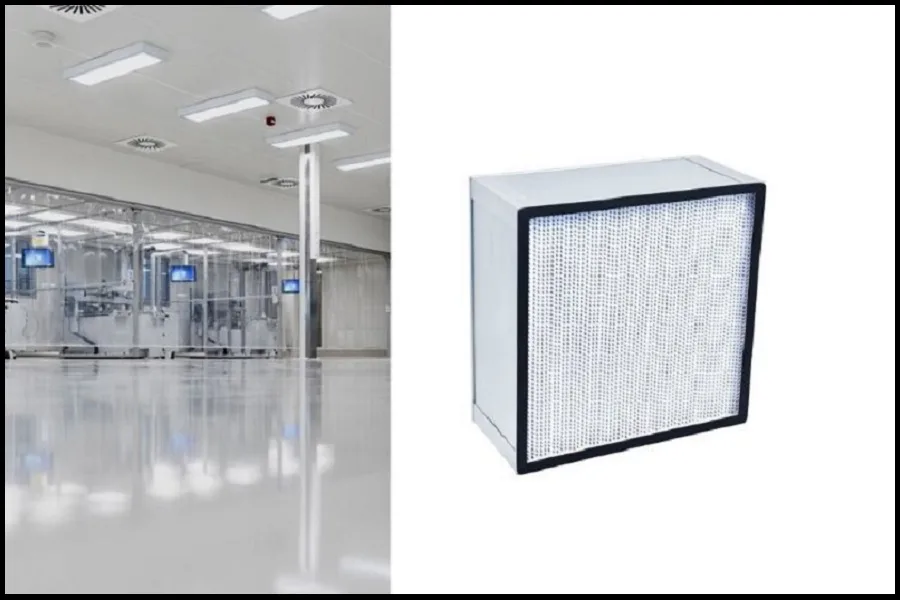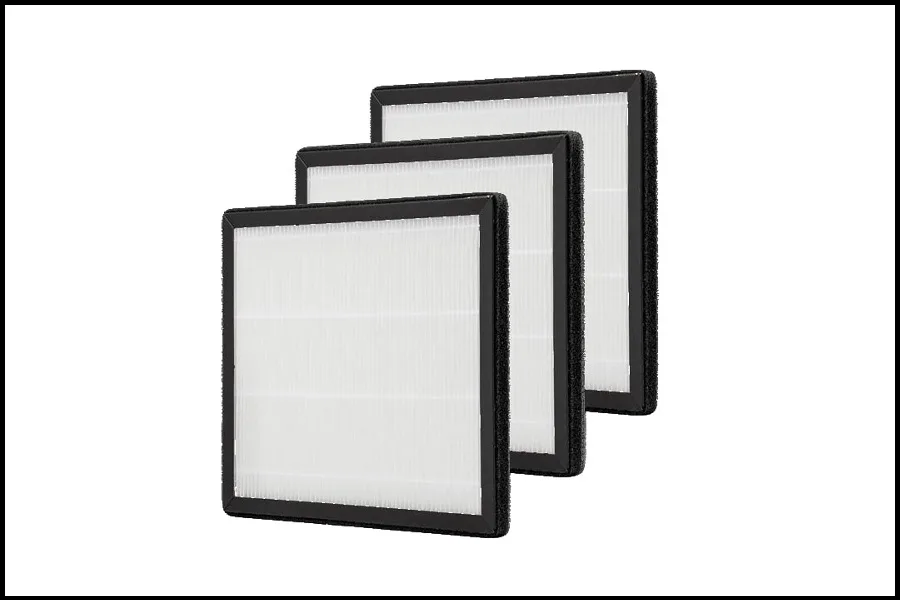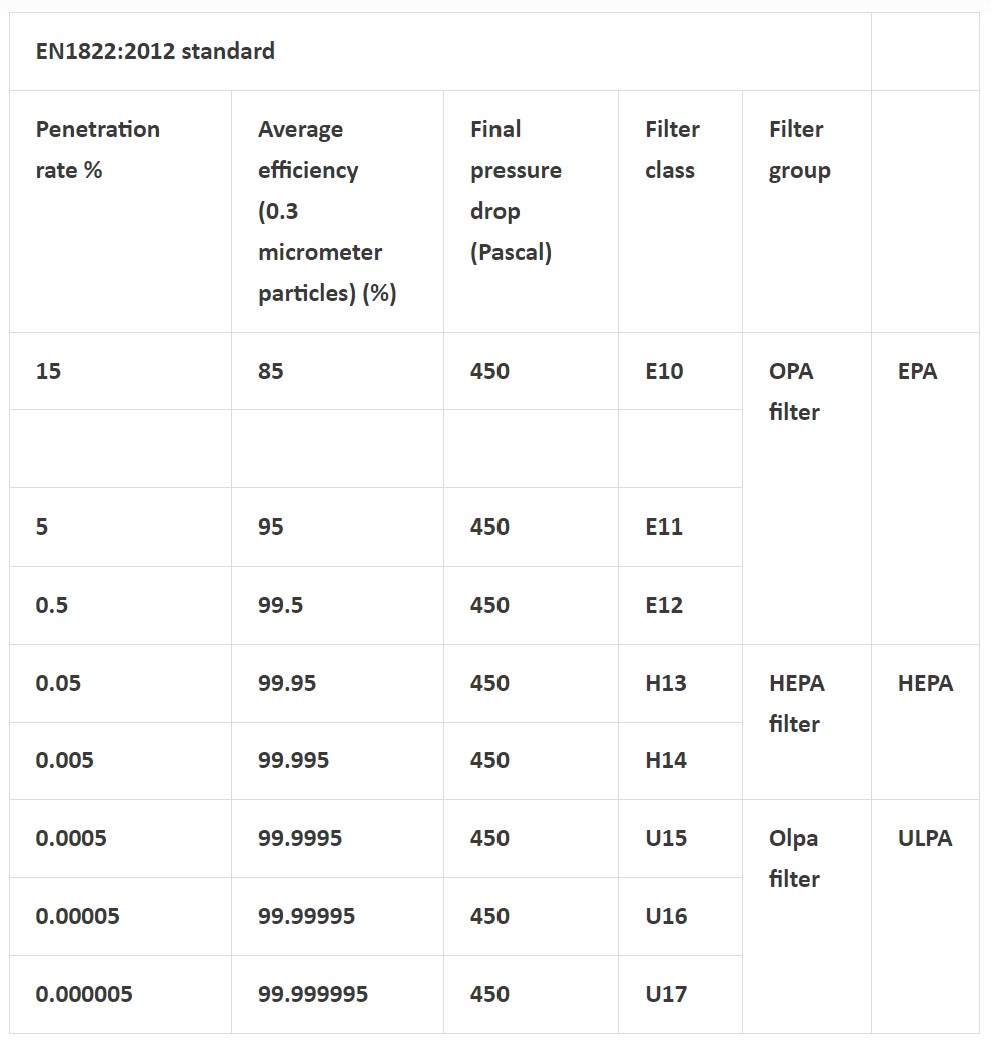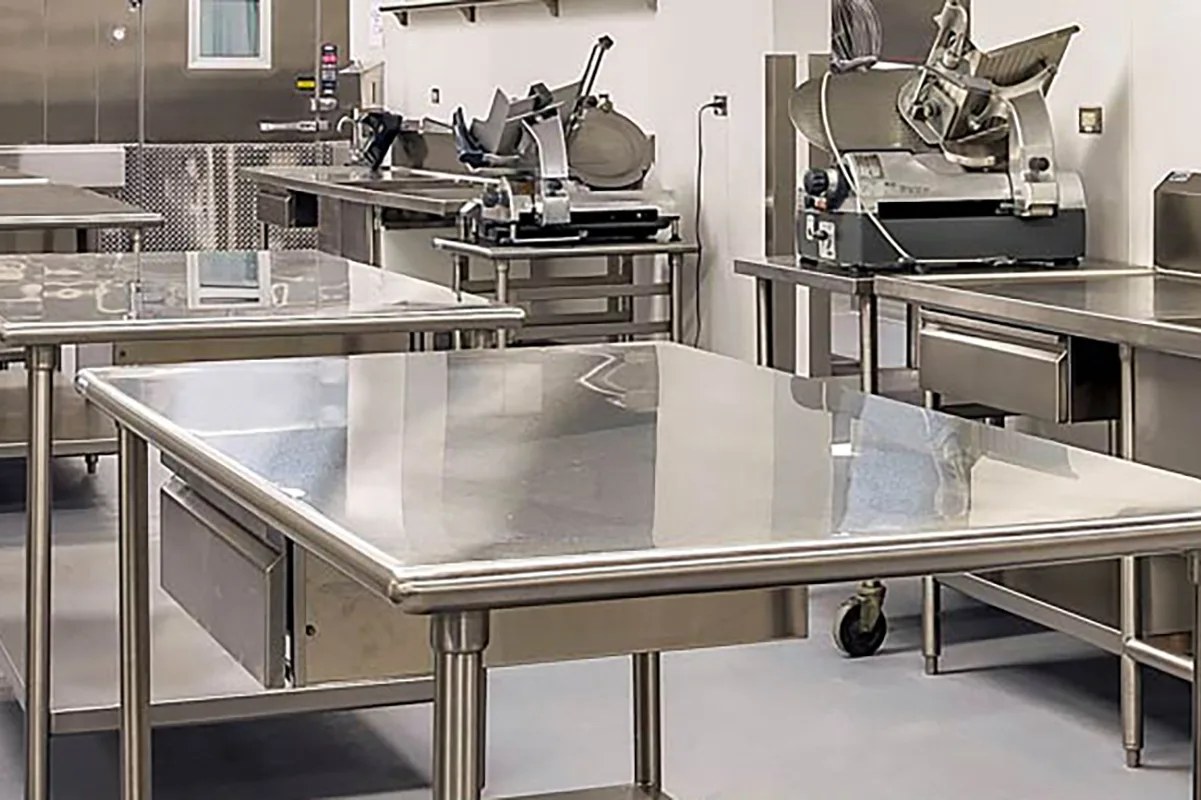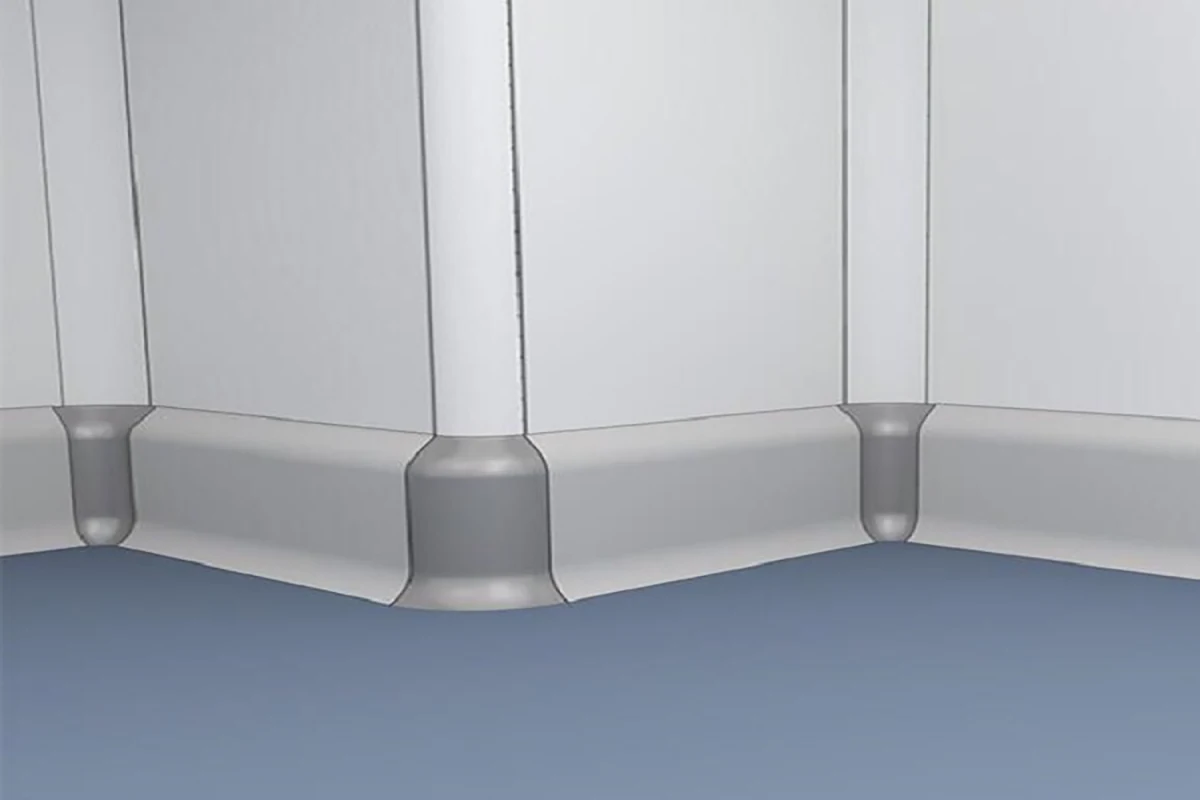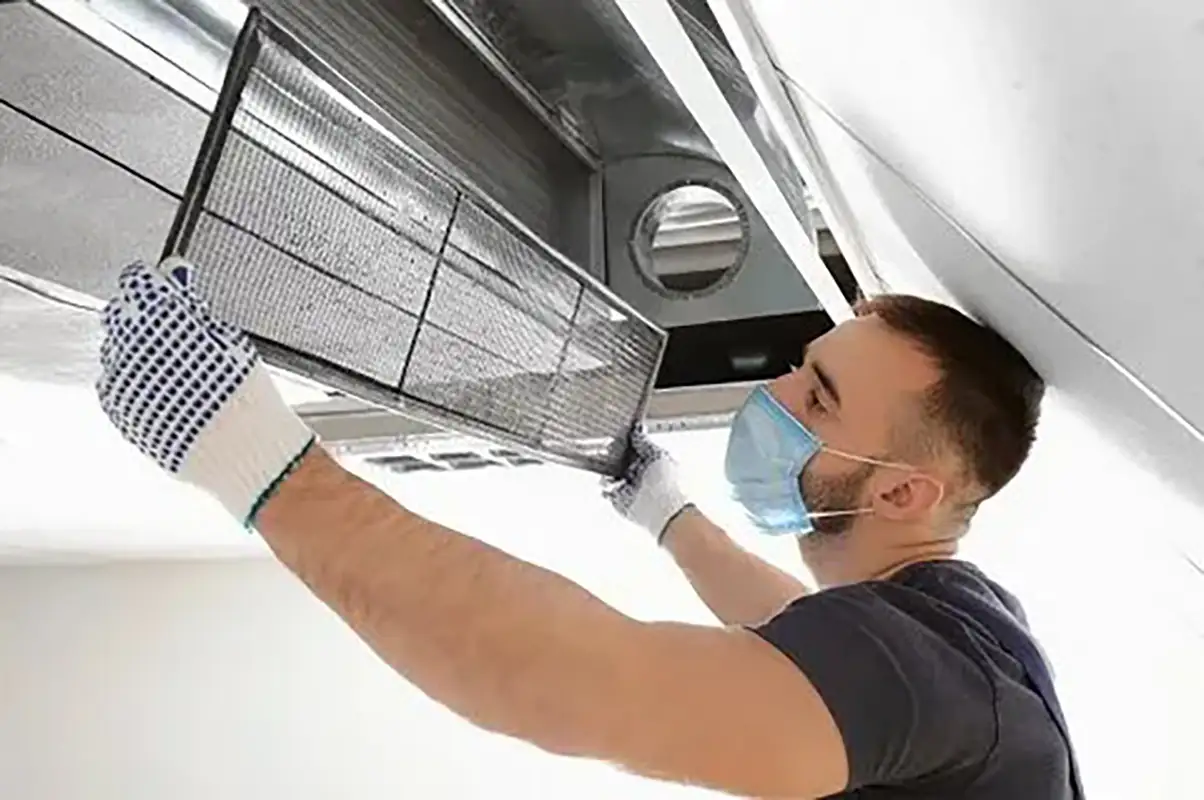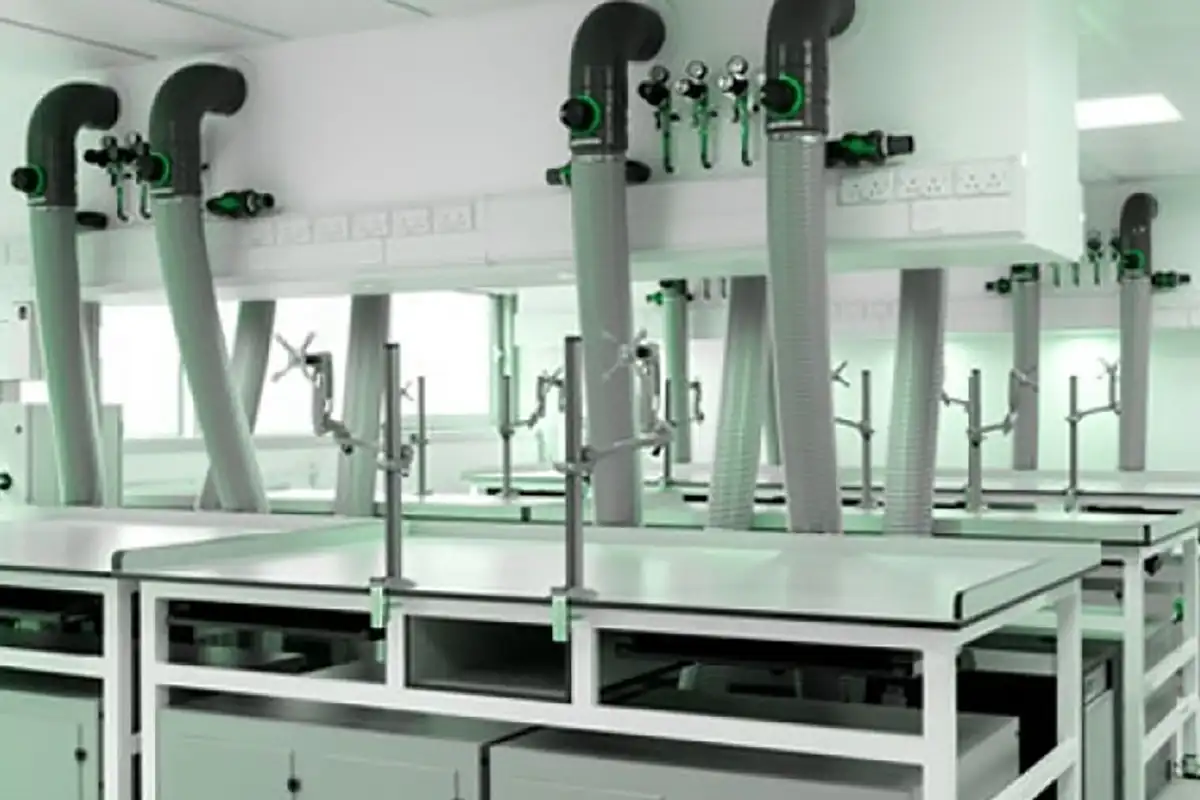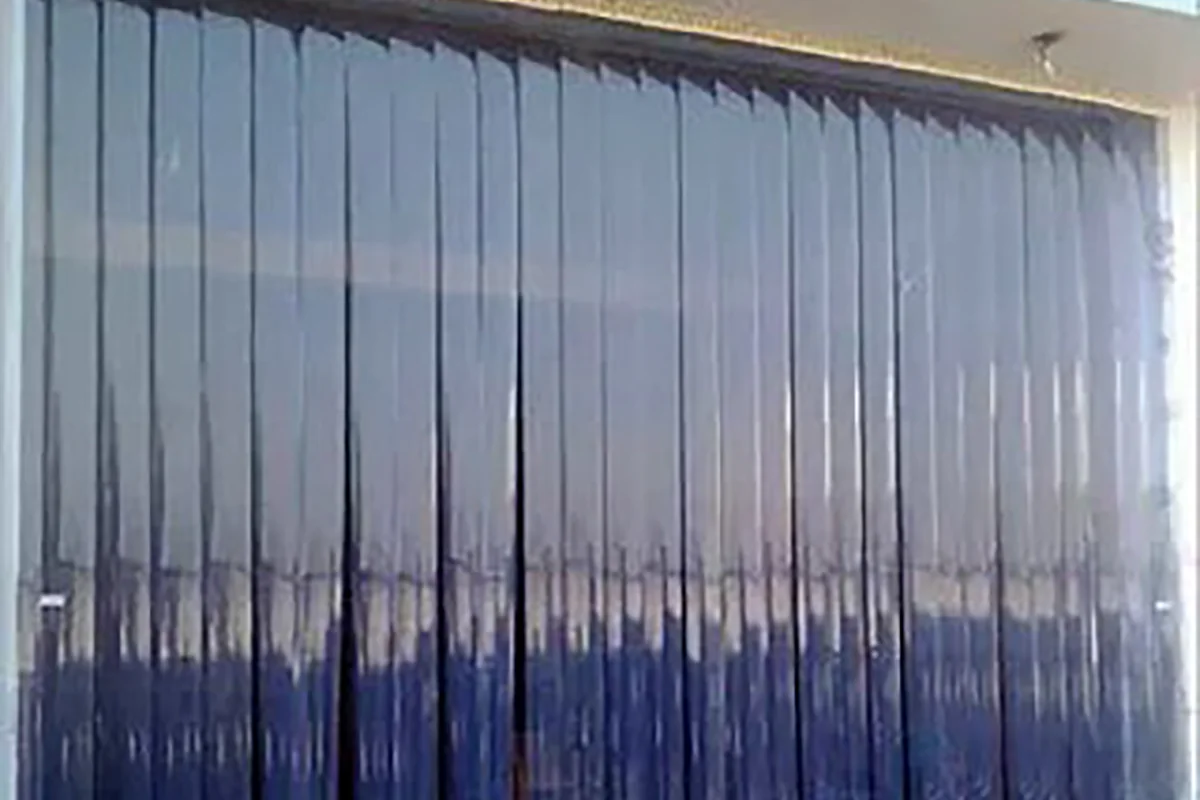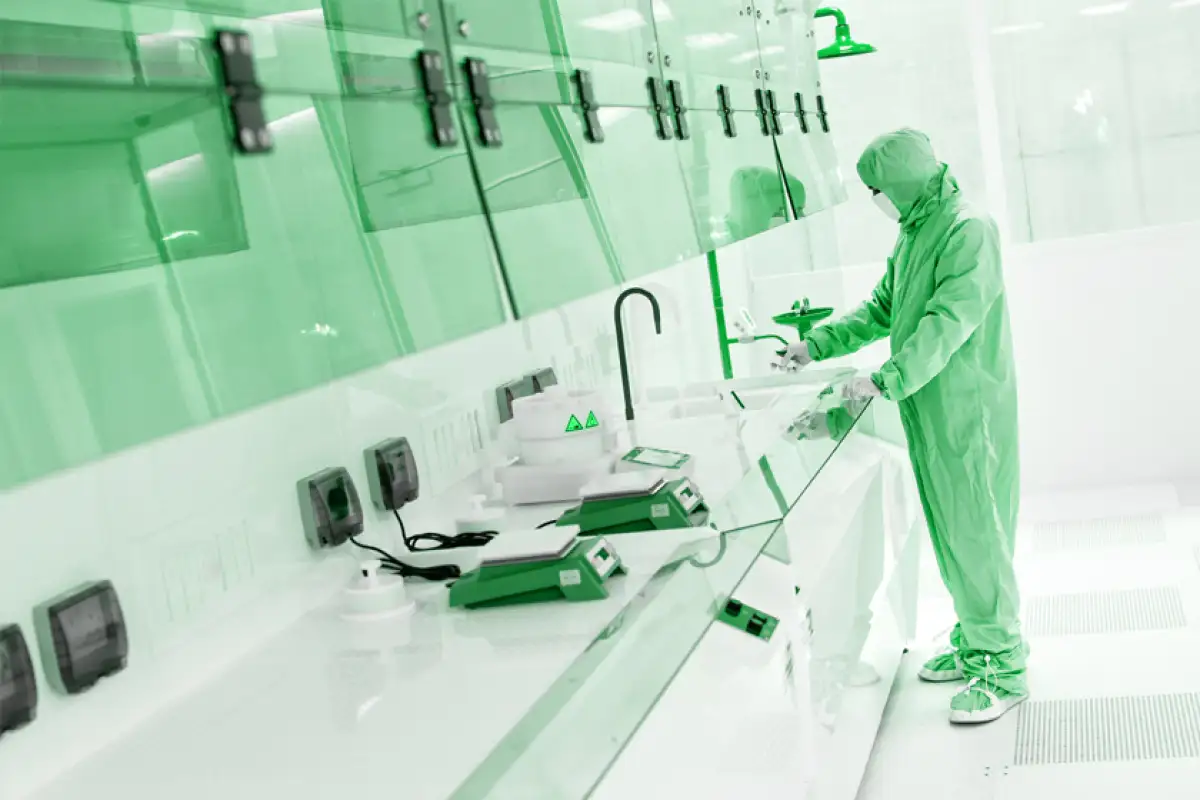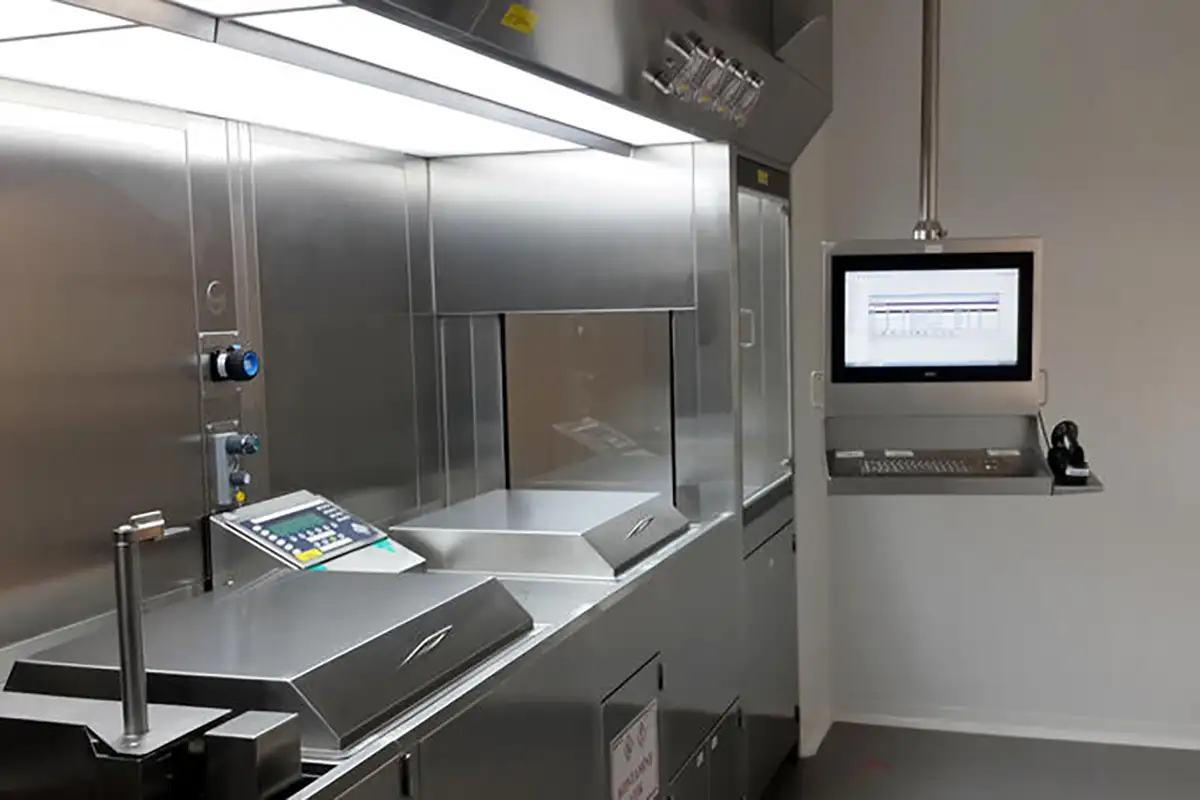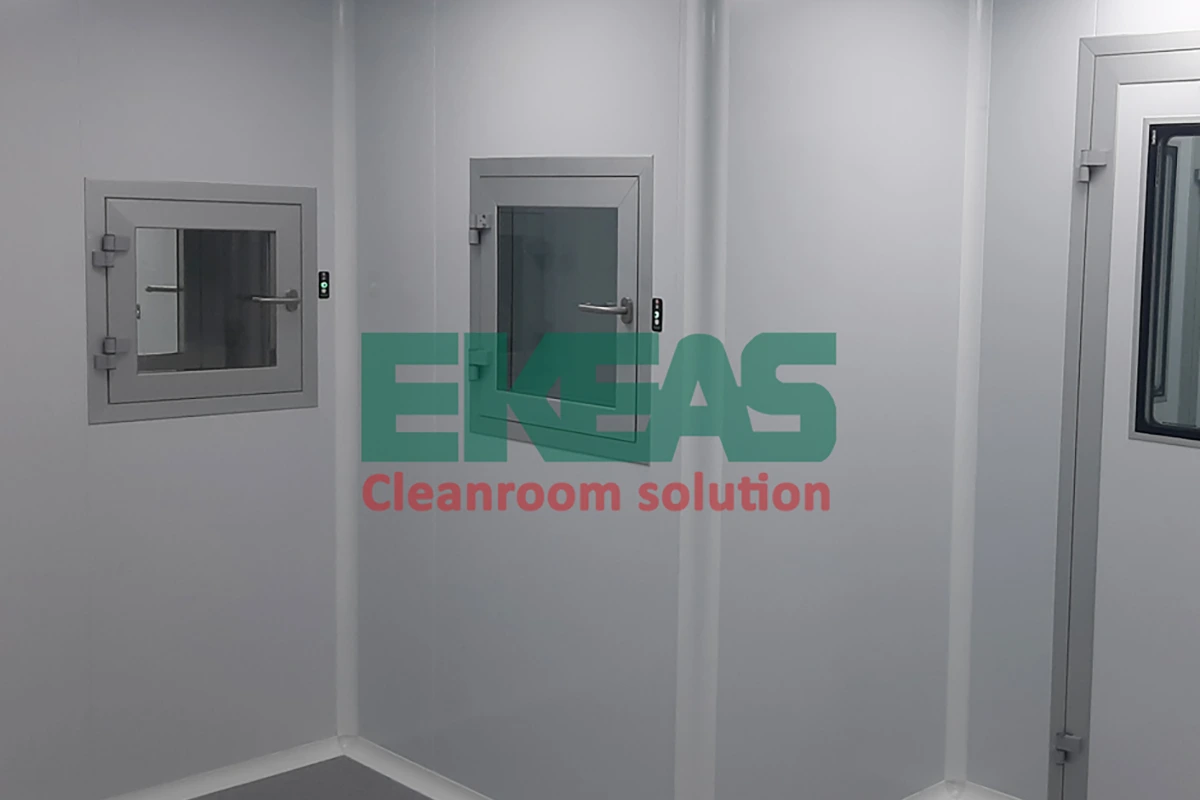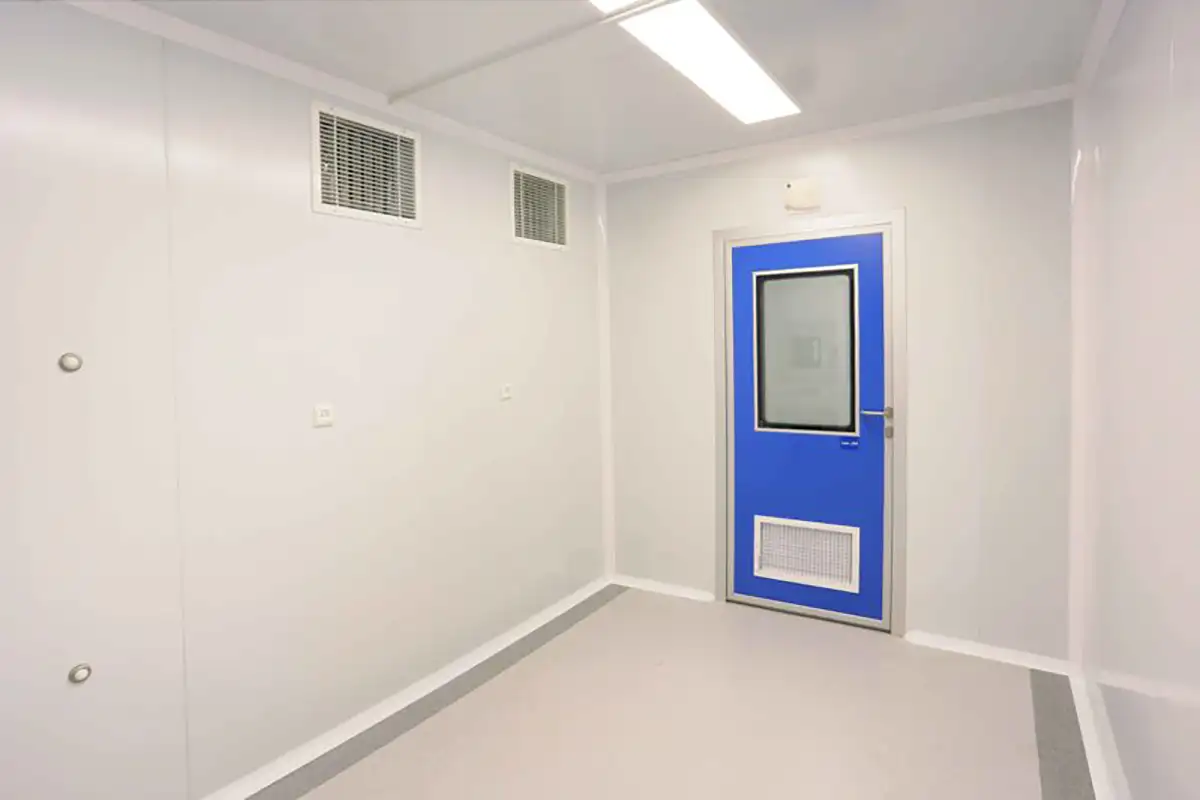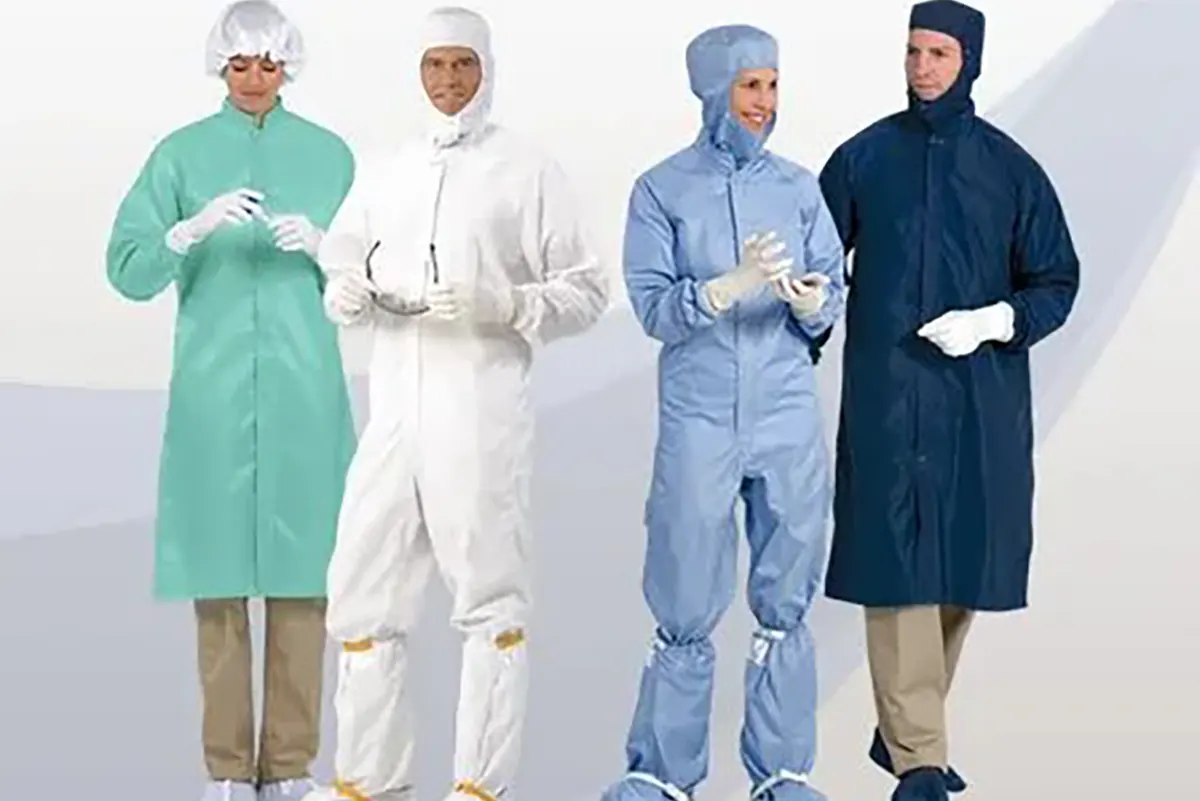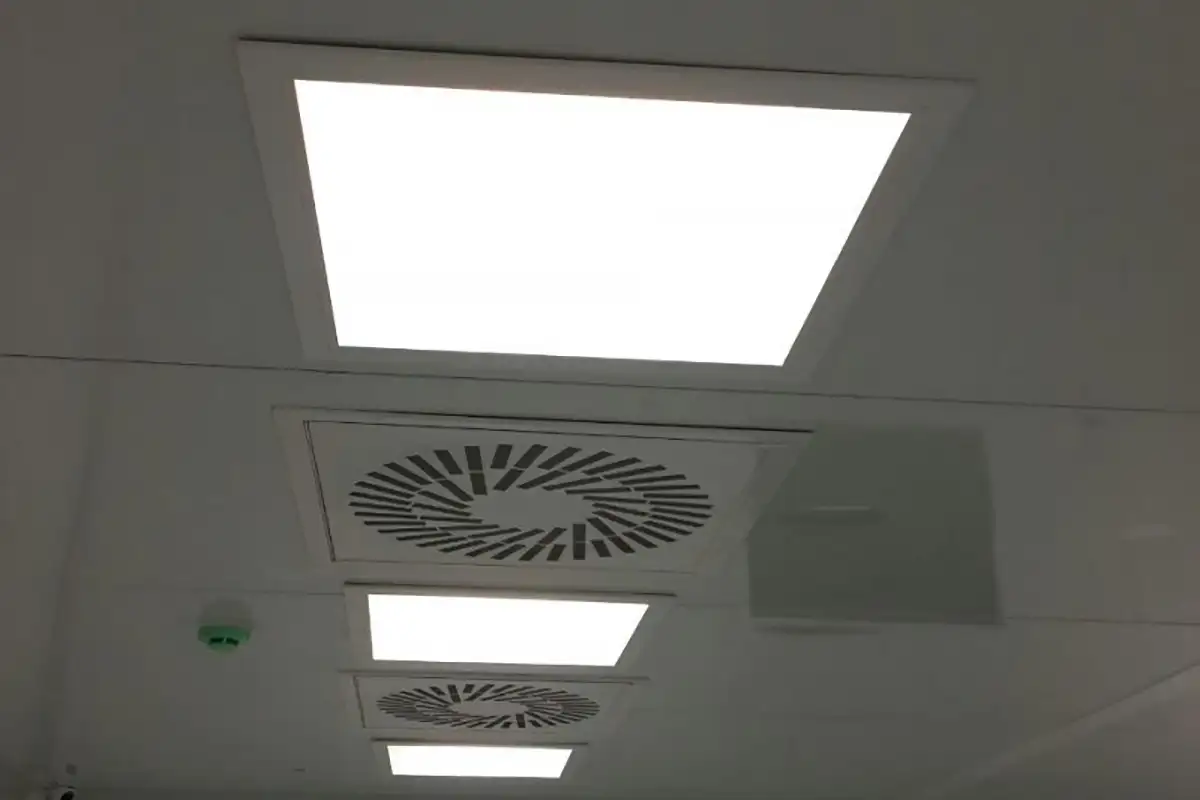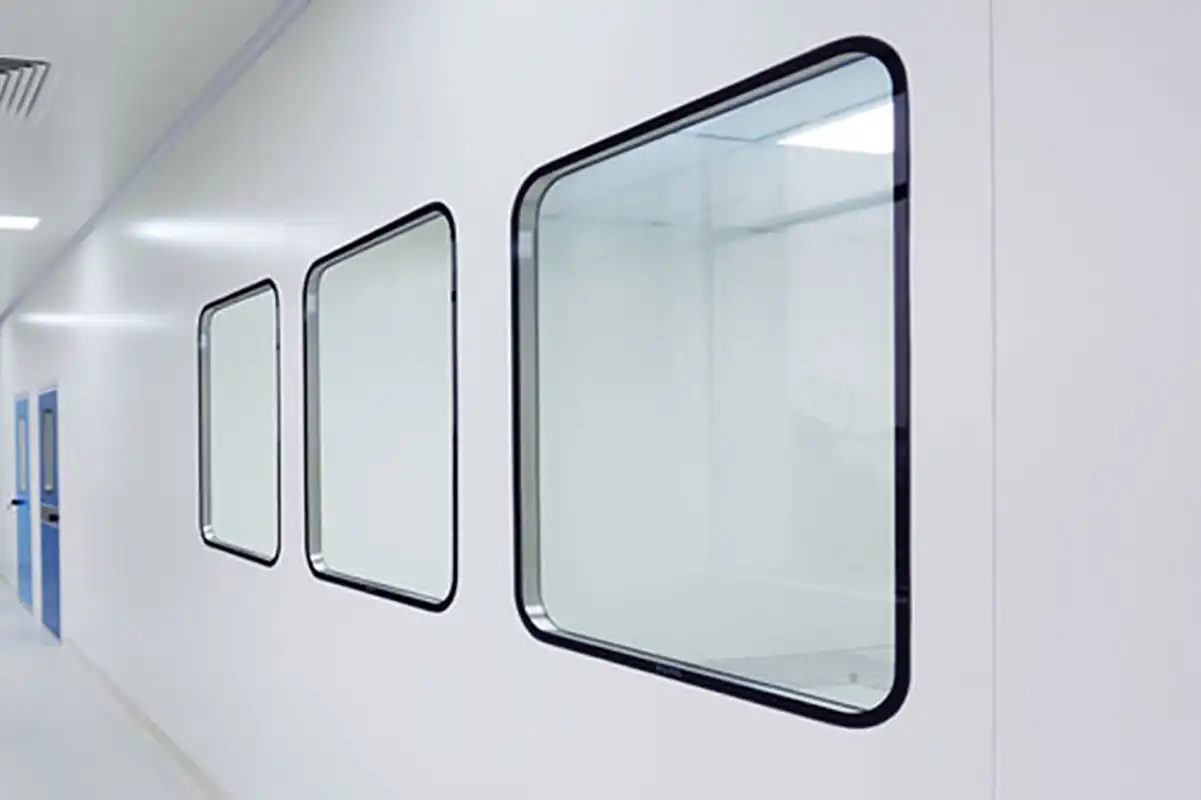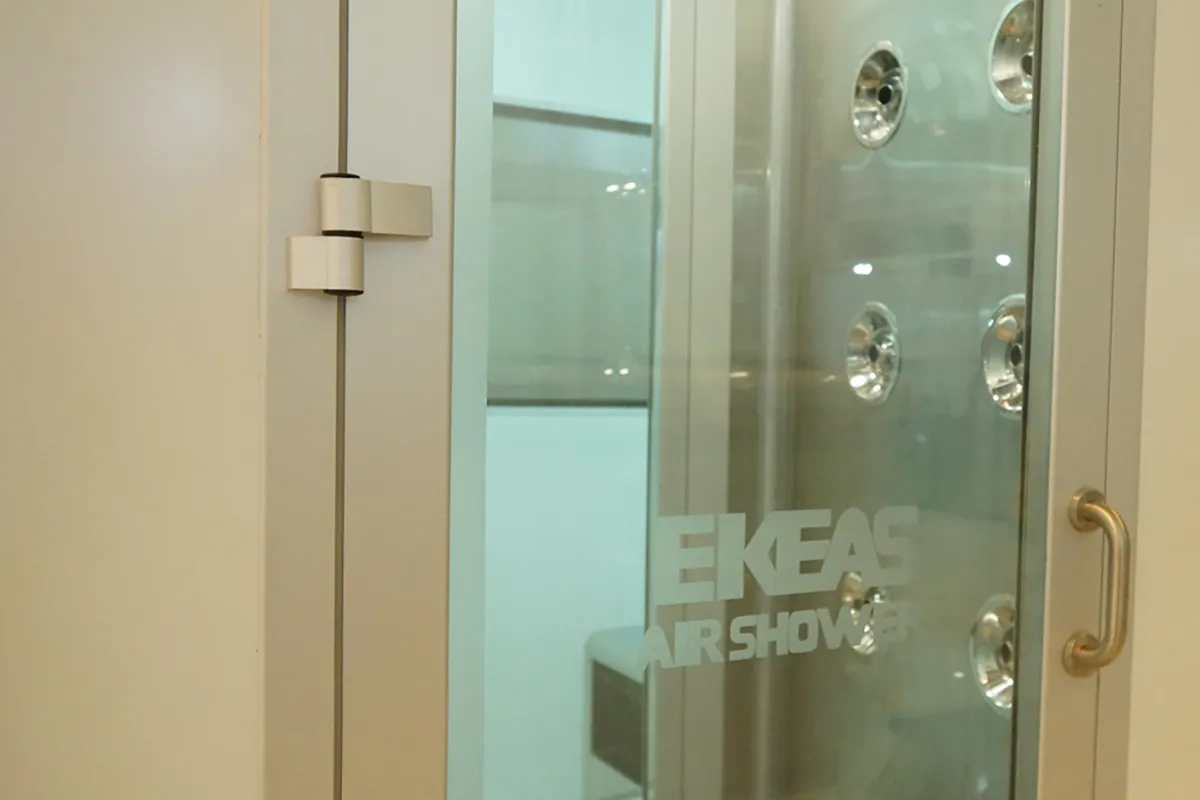Clean air is a key element in protecting products and personnel in cleanrooms. HVAC systems used in cleanrooms have always been one of the most challenging application areas in modern HVAC technology. HEPA filters are widely used in cleanrooms, laboratory environments, and factories, and they produce clean, filtered air. HEPA filters capture air pollutants with the help of a complex network of fibers. The type of HEPA filter is determined by the design of the cleanroom. In this article, we will discuss HEPA filters.
What is a HEPA filter?
A HEPA filter, or high-efficiency particulate air filter, can theoretically remove 99.95% of dust, pollen, mold, bacteria, and airborne particles 0.3 microns or larger. This filter was first designed in the United States in the 1940s and was used in the Manhattan Project to absorb radioactive pollutants in the air. A decade later, the HEPA filter was introduced to the market for commercial use. Since then, this filter has gained popularity in industries.
In recent years, HEPA filters have been used to a great extent for air purification in cleanrooms. These filters can remove almost all pollen, mold spores, animal hair, and smoke that cause respiratory diseases such as asthma and allergies.
Even PM 2.5 fine dust particles, which are less than 2.5 micrometers in size and have been widely discussed in recent years in terms of air pollution, can be removed by HEPA filters up to 99.9%. Therefore, harmful substances in the air that seriously affect human health and the quality of sensitive products such as drugs are completely removed.
read more | What is a Pre-filter
How HEPA filters work
Most HEPA filters are made of interconnected fiberglass fibers. These fibers are twisted and spun in countless directions to create a fibrous maze. The design and construction of HEPA filters are such that particles larger than 0.3 micrometers cannot pass through them. Large particles move in a straight line and collide with the filter fiber due to inertia.
Smaller particles can pass through the holes, but they collide with each other and move randomly. As a result, they collide with the filter fibers and stick to them. This is called Brownian motion. The working principle of HEPA filters is very simple. Air passes through a filter that traps pollutants through pressure.
Airborne pollutants are trapped in the filter inlet after passing through the filter. This process is repeated continuously, and the device captures all the dirty particles in the air and prevents them from returning. Even very fine dust particles as small as 0.3 microns are captured by HEPA filters. Dangerously fine dust particles such as PM2.5 (symbol 2.5 microns) are also trapped by HEPA filters. This ensures that the HEPA filter helps to protect the air in your cleanroom from all three categories of pollutants.
Benefits of using HEPA filters in a cleanroom
HEPA filters are designed to reduce pollutants, maximize operational efficiency, and minimize exhaust noise. This filter is considered a vital element in cleanrooms. Among the benefits of HEPA filters, the following can be mentioned:
Absolute efficiency rate (up to 99.99%) High capacity for dust storage Creating a protective shield against bacteria Materials used in its construction are safe enough Easy installation and maintenance
Applications of HEPA filters in a cleanroom
HEPA filters have an interlock mechanism with an alarm that prevents the doors on both sides from opening simultaneously. This not only prevents the contamination of dirtier spaces, but also prevents disruption of the air balance between rooms with differential pressure. As long as one side is open, the other side will always be locked. Here are the most important applications of HEPA filters in cleanrooms.
Sensitive Drugs and USP 800 Cleanrooms
HEPA filters play a critical role in USP 800 cleanrooms, which are also used for sterile preparation. Because USP 800 cleanrooms must be under negative pressure, every time the door is opened, the air inside the pass-through is drawn into the cleanroom. Thus, the recirculation of the HEPA filter minimizes the chance of airborne contaminants entering the cleanroom through the pass-through compartment (especially when the adjacent room is not classified).
read more | What is a Bag filter
USP 797 Cleanrooms
HEPA filters are an ideal option for preparing pharmaceutical compounds, including injectable drugs and other sterile preparation processes. By using a seamless interior, daily cleaning and sterilization can be performed more quickly and easily. The filtered airflow also reduces the amount of surface contamination that builds up throughout the day.
Medical Devices and Sterile Packaging
Pass-through enclosures, like sterile pharmaceutical materials, are an excellent choice for manufacturing medical devices during the production of T-cell therapy devices, catheters, sterile packaged items, pacemakers, and other sensitive biological materials. HEPA filters, integrated with UVC disinfectant lamps, provide a higher level of contamination control when objects enter and exit the cleanroom.
How HEPA Filters Filter Airborne Particles
HEPA filters are used in equipment and devices that control air suction or blowing. Some household appliances that use these filters include air purifiers and vacuum cleaners. HEPA filters also have industrial, medical, and laboratory applications. HEPA filters are made from fiberglass fibers, fabric, mats, and compressed materials. The fiber diameter varies from 0.5 to 2 microns, depending on their application.
Appropriate Control Level
To achieve the appropriate control level, the air entering the cleanroom must be filtered to remove dust, and the air inside must also be continuously circulated and passed through HEPA (high-efficiency particulate air) or ULPA (ultra-low penetration air) filters to remove contaminants that have been generated inside the environment. Air filters are typically described and rated based on particle collection efficiency, pressure drop (or air flow resistance), and collected particle holding capacity. HEPA filters typically have efficiencies of over 99.97% in collecting particles larger than 0.3 micrometers from room air. Particle filtration is based on four general principles: inertial impaction, interception, diffusion, and electrostatic attraction.
Air filters consist of a filter media, a gasket, a frame, and sometimes a protective top layer or gasket. Common types of filter media are glass fibers, synthetic fibers, non-woven fibers, and PTFE (polytetrafluoroethylene). These different filter components illustrate why regular evaluation of air filter leaks is important.
The incoming air to the cleanroom must be filtered before entering the cleanroom and then enter the cleanroom. In the air filtration process, suspended and airborne particles are removed and air with the desired quality enters the cleanroom.
To achieve the desired air quality, several stage filters with different efficiencies are used in the air flow path. In general, filters can be divided into three main categories:
- Prefilters to separate and remove coarse particles
- Intermediate filters to separate and remove particles of medium size
- High-efficiency filters to remove fine and ultrafine particles
read more | Standard air conditioner
The air filters used in cleanroom technology and cleanroom air handling systems are fiber filters that are formed by the free arrangement of fine and high-quality fibers next to each other. The fiber diameter affects the filtering performance of the fabric, and a lot of free space is considered between the fibers so that particles can penetrate deep into the filter, then be trapped. This results in high dust holding capacity.
In a fibrous filter, a number of mechanisms interact:
- Sieving: This is effective when the distance between two fibers is smaller than the particle diameter.
- Obstruction: This is effective when the flow line carrying the particle passes close enough to the fiber for the particle to impact it.
- Inertia: This is most effective for particles larger than 1 micrometer: these particles, due to their relatively high mass inertia, cannot follow the air flow lines as they are deflected towards them around the fibers. As a result, they tend to impact the fibers.
- Diffusion: This is related to very small particles (less than 0.5 micrometer) with low mass: as a result of the continuous collisions of these particles with the surrounding gas molecules, they experience a random diffusive movement around their flow line (Brownian motion). Therefore, the probability of a particle colliding with one of the filter fibers increases. With decreasing particle diameter, these fluctuations become more noticeable.
The total separation efficiency E, i.e. the sum of the efficiencies of a single filter unit, is the sum of the effects mentioned above. It is usually expressed as a percentage (%). The phrase total penetration efficiency P is often used instead of the phrase total separation efficiency, which indicates the percentage of particles that have passed through the filter. These two are complements of each other, in this way:
E + P = 100 ➔ P = 100 – E
With increasing particle diameter, the mechanisms of obstruction and inertia become more effective. The opposite is the case for the effect of the diffusion mechanism: with decreasing particle size, the mobility of the particles and, as a result, their diffusion and the probability of their entrapment increase. As a result, the total separation efficiency has a minimum and the total penetration efficiency has a maximum. This maximum penetration of particles is influenced by the size of the particles that have the highest penetration and is a function of the air penetration speed from the filter cloth. Since the air penetration speed in cleanroom filters is very low, in the order of a few centimeters per second, the filter environment must be pleated to achieve the desired speed of 0.5-0.4 meters per second at the filter surface.
read more | Air-cooled chillers
The size of the particles that have the highest penetration for a glass fiber filter environment is typically between 0.1 and 0.2 micrometers. As a result of these features of fibrous filters, both very small biological particles such as viral cells with a diameter of about 0.1 micrometer and very large living particles such as microorganisms that usually attach to particles of 2 micrometers and larger are well trapped in all high-efficiency filters with different quality grades.
When particles settle on the fiber surface, they remain fixed there by surface forces (van der Waals forces).
The separation efficiency of air filters in HVAC systems or cleanroom air handling units covers a very wide range of particle sizes. Therefore, they are usually divided into functional groups, which themselves are divided into different grades of air filters. According to the European standards EN779 and EN1822, there are five distinct filter groups:
- Coarse dust filters (with the prefix G, grades G1 to G4): These filters are designed to remove coarse particles such as dust, pollen, and hair.
- Medium dust filters (with the prefix M, grades M5 to M6): These filters are designed to remove medium-sized particles such as smoke, mold spores, and pollen.
- Fine dust filters (with the prefix F, grades F7 to F9): These filters are designed to remove fine particles such as bacteria, viruses, and mold spores.
- Efficient particulate air (EPA) filters (with the prefix E, grades E10 to E12): These filters are designed to remove very fine particles such as smoke, mold spores, and pollen.
- High-efficiency particulate air (HEPA) filters (with the prefix H, grades H13 to H14): These filters are designed to remove extremely fine particles such as bacteria, viruses, and mold spores.
- Ultra-low penetration air (ULPA) filters (with the prefix U, classes U15 to U17): These filters are designed to remove the smallest particles, such as viruses and mold spores.
The World Health Organization also recommends the use of the European standard scheme for classifying filters in its guidelines for pharmaceutical HVAC.
Air filtration systems in cleanrooms typically consist of three stages:
Stage 1: A medium-performance particulate filter to protect the cleanroom air handling unit from contamination.
Stage 2: A high-performance particulate filter to keep the air paths and ducts clean.
Stage 3: EPA, HEPA, or ULPA filters to ensure the quality of the air entering the cleanroom.
A three-stage air filtration system in a cleanroom, in accordance with the recommendations in the table below, will ensure long life of the EPA, HEPA, or ULPA filters.
read more | Cleanroom stainless steel equipment
High-efficiency filters
According to EN1822, there are two types of high-efficiency filters, known as HEPA (high-efficiency particulate air) or ULPA (ultra-low penetration air) filters. The downstream velocity of these filters should be around 0.45 meters per second and their pressure drop should be between 120 and 220 Pascals. These filters are designed to control the number of particles entering a cleanroom using filtration mechanisms. The performance of HEPA filters is the result of a combination of three important aspects. First, there are one or more outer filters that act like a sieve and stop larger particles of contamination, dust, and hair. Inside those filters, there is an accordion that has a layer of very dense fibers that trap smaller particles. The inner part of the HEPA filter traps particles that pass through the airflow.
The type of filter purchased depends on the facility’s needs. Most pharmaceutical manufacturing facilities use H13 or H14 HEPA filters.
When specifying a filter, special attention should be paid to its sealing or filter gasket, which comes in a variety of types.
A neoprene rubber gasket is 6 to 8 millimeters thick to fit the filter frame. The gasket is compressed into the housing to prevent the leakage of contaminated air. In most cases, this method is successful, but if there is a minor error in the housing design or the gasket is too tight or loose, or does not have high quality, it easily allows contamination to leak.
Gasket Gel
It has ideal tightness and ensures no leakage, i.e. it prevents unfiltered air from passing through the filter frame and thus polluting the cleanroom. This frame is a duct filled with gel. The container designed for this purpose and the part of it that is attached to the frame have a knife-like shape that allows the gel to fill the entire container when in contact, and in turn leaves no space for unfiltered air to pass through.
HEPA Filter Structure
A HEPA filter, which is an acronym for High Efficiency Particulate Air, is made of special polymeric fibers that have internal pores. This structure allows air to pass through these pores, but larger particles than 0.03 microns remain in the filter. Therefore, to increase the efficiency and life of the filter, it is folded horizontally. This way, a large amount of filter can be compressed in a small area. In some air purifiers, it may be possible to place 40 meters of filter surface in a 1-meter unit.
This air filter is available in sheet and rectangular shapes. In some models with other applications, they can be used in two cylindrical and circular shapes. Common HEPA filter models are not washable, but part of them can be cleaned by shaking the filter or passing a strong air stream. However, it is recommended for air purifiers to purchase a new filter after the previous filter expires.
read more | Cleanroom air shower
HEPA filters come in a variety of types. Different particle classes of filters have different diameters, but the HEPA filter classification standard is based on the amount of particles with a diameter of 0.3 microns. For example, the lowest class of HEPA filter, HEPA10 or H10, filters up to 85% of airborne particles. HEPA filters are rated according to their filtration rate. The table below shows the different categories of this filter.
HEPA Filter: High Efficiency Filter
Air entering a cleanroom must be filtered before entering the cleanroom to reach the specified contamination level. The use of pre-filters, intermediate filters, and high-efficiency filters (HEPA, ULPA, and HEPA) in a cleanroom or cleanroom ventilation system is essential. The cleanroom air handler must be designed and constructed to accommodate the number of filter beds required. Pre-filters are used to remove larger particles, while intermediate filters are used to remove and remove particles of medium size. HEPA and ULPA filters are used to remove fine particles (0.3 microns).
For example, the efficiency of HEPA filters H13 and H14 is 99.95% and 99.995%, respectively, in absorbing particles of 0.3 microns and larger. Depending on the design of cleanrooms, high-efficiency filters are either installed in the air handler or in the ceiling of the cleanroom. High-efficiency filters (EPA and HEPA) and very high (ULPA) filters are divided into two types: surface pleated (Mini pleated) or deep pleated (Deep pleated).
The pressure drop generated in these types of high-efficiency filters (EPA, HEPA) and very high (ULPA) filters depends on the speed of the incoming air to these filters and the type of filters. The nominal air flow rate through HEPA filters is typically 100 feet per meter, which creates a pressure drop of between 110 and 170 pascals. When the pressure drop reaches 2/5 to 3/5 of the initial pressure drop, it is usually time to replace the filters. A differential pressure switch (DPS) or differential pressure transmitter (DPT) can be used to alarm and display HEPA filter pressure drop. High-efficiency filters are the last stage in the filtration system. The efficiency of these filters is above 85% on particles of 0.3 microns.
Pre-filters and intermediate filters are installed before high-efficiency filters, which protects and increases the life of high-efficiency filters.
read more | Pass Box in a Cleanroom
EN 1822 Standard
This standard is used for the classification and testing of high-efficiency and very high-efficiency filters. One of the important parameters in the classification of filters in this test is the use of the particle size with the most permeability. (MPPS: Most penetrating particle size) – In this method, the permeability of particles in the filter and the separation efficiency of the filter at the desired particle size are measured. Each filter is used to remove particles of a specific size. Therefore, the particle size for evaluating and measuring the filter of the same size must be selected. In the evaluation of the filter and its classification, variables such as the characteristics of the filter fibers, air speed, and its density are important. In this method, the first step is to determine the MPPS of the filter fibers or paper. The determination of MPPS is determined in two states. 1- Local efficiency 2- Overall efficiency
The frame of high efficiency filters can be made of aluminum, galvanized or ABS (plastic).
Ekeas; Supplier of the Finest HEPA Filters for Cleanrooms
The use of HEPA filters is essential in reducing or preventing the spread of pollutants in the air of all types of cleanrooms, including bacterial and viral organisms that cause infections. Please note that the HEPA filter system must truly be capable of filtering 99.97% of particles with a size of 0.3 microns.
Ekeas Group is one of the leading companies in the design and implementation of cleanrooms and their equipment in Iran. At Akias, we offer the best HEPA filter for your cleanroom type, at a highly competitive price. For more information about HEPA filters, please contact our experts at Akias.
Cleanroom Equipment by Ekeas
Cleanrooms include a variety of equipment, and in order for a cleanroom to meet standards, it must use the appropriate equipment. Here are a few examples of cleanroom equipment:

